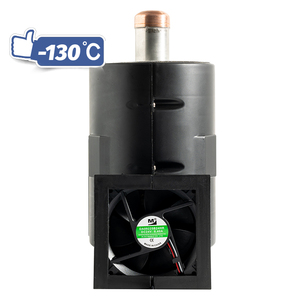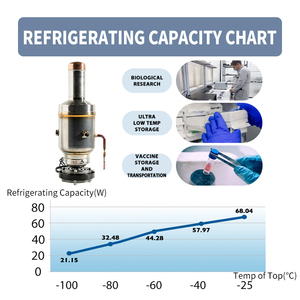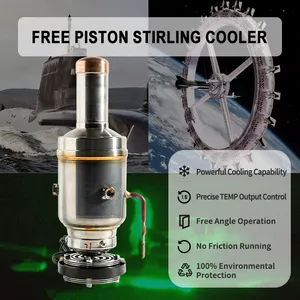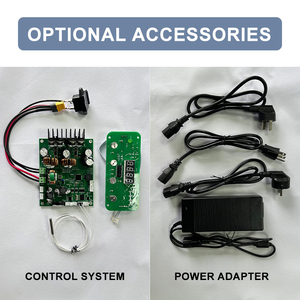
All categories
Featured selections
Trade Assurance
Buyer Central
Help Center
Get the app
Become a supplier

(3500 products available)




















































Refrigeration Trainer System
This system demonstrates the refrigeration cycle. It has key parts like the compressor, condenser, evaporator, and expansion valve. By watching the components work, users learn how refrigeration keeps things cold.
Refrigeration and Air Conditioning Trainer
This trainer combines refrigeration and air conditioning lessons. It teaches users how these two systems work. Users will grasp the differences and similarities between both systems.
Domestic Refrigeration Trainer
This trainer focuses on home refrigerators. Users learn how their everyday fridges work. It helps users fix and maintain these common appliances.
Commercial Refrigeration Trainer
Bigger fridges used in stores and restaurants are covered here. This trainer looks at commercial fridges and freezers. Users learn to repair larger cold storage systems used in business.
Electrical Refrigeration Trainer
This trainer connects refrigeration to electricity. It teaches how electric currents help fridges cool down. Users learn the important electrical concepts needed to fix refrigerators.
Advanced Refrigeration Trainer
This advanced trainer is for users who already know the basics. It dives deeper into complex refrigeration systems. Users learn to troubleshoot difficult problems.
Metal>>M
Metals like steel and aluminum build most refrigerator parts. For example, condenser coils often use copper because it conducts heat well. Steel frames are sturdy for supporting the entire trainer. The metal parts last long and resist wear from constant use.
Plastics
While metal makes the main parts, plastics often store the components. The housing around the coils, compressor, and other pieces may be plastic. These materials ensure the parts stay safe and organized. Plastics are lighter than metal too, making the trainer easier to move.
Glass
Some refrigeration trainers include a glass showcase. This showcases the internal cooling system for learning purposes. Glass lets users easily view the components inside the trainer. This material is also durable and will not break easily. Glass is perfect for creating clear, strong containers.
Rubber
This flexible material makes seals for the refrigeration system. Rubber O-rings keep the refrigerant inside. Without these rings, the system would leak. Users learn the refrigerant's role while seeing the conservation lesson in action.
Refrigeration and AC training
Refrigeration trainers prepare technicians for jobs fixing refrigerators and AC units. Large retailers, grocery stores, and restaurants operate these systems. Skilled workers keep the cold storage running properly.
Food Safety
Proper refrigeration prevents food from spoiling at warehouses and delivery trucks. Trainers teach how to maintain safe cold temperatures. Users learn the importance of keeping food fresh and safe to eat.
Manufacturing
Freezer trainers show how to build and repair commercial fridges used in warehouses and stores. Without trained workers, manufacturers cannot produce enough refrigerators to meet demand. This limits their ability to sell products.
Cold Storage
Refrigeration trainers keep technicians current on refrigeration technology. Warehouse workers learn to maintain consistent cold temperatures. This protects perishable goods like meat, dairy, and produce during storage.
Transportation
Deep freezers on trucks keep food at the right temperatures during delivery. Trainers teach drivers how to monitor and repair the refrigeration systems. This ensures food arrives fresh at its destination.
Budget
Decide how much to spend. Trainers vary in price depending on features. Look for one that fits the budget while meeting important training needs.
Realism
Pick a trainer that closely matches actual systems. The more realistic the setup, the better users will learn. Choose one that handles both refrigeration and AC concepts.
Size
Make sure the space allows for the chosen trainer. Some trainers are big, needing large areas. Others are compact and simple to move. Measure the training room before deciding.
Hands-on Learning
Select a trainer that enables hands-on practice. Learners should be able to take apart components and perform real repairs. This builds more effective skills for future jobs.
Durability
Check that the trainer is strong but not too heavy. Schools will use the equipment daily. Pick models built to take a lot of use over time without breaking. Yet, they should still be transportable.
Compatibility
Ensure the trainer works with current industry tools. Users should be able to learn using the same instruments they will use on the job. This makes the transition to work smoother.
A: The main parts include the compressor, condenser coils, evaporator unit, expansion valve, and refrigerant. These elements work together to cool the system.
A: Some common trainers are the air conditioning trainer, domestic refrigeration trainer, commercial refrigeration trainer, electrical refrigeration trainer, and advanced refrigeration trainer.
A: The system circulates refrigerant through a cycle of compression, condensation, expansion, and evaporation in different components to move heat and create cooling.
A: The refrigerant absorbs and releases heat as it changes from liquid to gas and back again. It allows the system to transfer heat from indoors to outdoors, cooling indoor space.
A: Regular maintenance tasks include cleaning or replacing filters, checking refrigerant levels, inspecting for leaks, and examining components like the compressor, coils, and fans for wear or damage.
A: These are often employed in vocational schools, training centers, and workshops where students learn to install, repair, and maintain refrigeration and air conditioning systems for their careers.